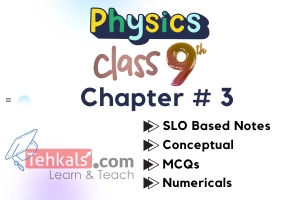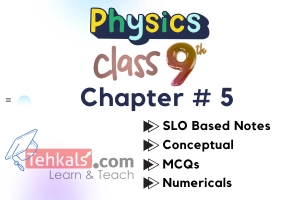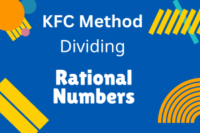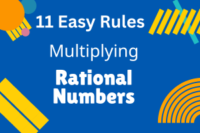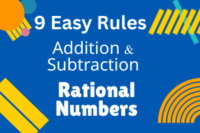Class 9 Physics Chapter 4
Published: 21 Oct 2023
Class 9 Physics Chapter 4 is about “Turning Effect of Forces”. This article includes topics such as Force Diagrams, Like Parallel Forces, Unlike Parallel Forces, Head to Tail Rule, Addition of Forces, Resolution of Forces, Center of Mass, Center of Gravity, Rotational Motion, Rigid objects, Axis of Rotation, Difference between Center of Gravity and Center of Mass, Torque or Moment of Force, Clock and Anti-Clock wise Torque, Couple, Equilibrium, Conditions of equilibrium, First Condition of Equilibrium, Second Condition of Equilibrium, Principle of Moments, Types of Equilibrium, Static Equilibrium, Dynamic Equilibrium, Stability, Stable Equilibrium, Unstable Equilibrium and Neutral Equilibrium.
Class 9 Physics Chapter 4 Notes
Turning Effect of Forces Notes
Class 9 Physics Chapter 4 SLO Notes
Class 9 Physics Chapter 4 MCQs
Force Diagrams
1 Which of the following diagrams represents the forces acting on an object?(a) Force diagram
(b) Resultant diagram
(c) Motion diagram
(d) Velocity diagram
Show Answer
Force diagram
To Download Complete Notes of Physics Notes 9 Class, Click on the given link.
Like Parallel Forces
2 When two forces act in the same direction, they are called:(a) Like parallel forces
(b) Unlike parallel forces
(c) Anti-parallel forces
(d) All of these
Show Answer
Like parallel forces
Unlike Parallel Forces
3 When two forces act in opposite directions, they are called:(a) Like parallel forces
(b) Unlike parallel forces
(c) Anti-parallel forces
(d) All of these
Show Answer
Unlike parallel forces
Head to Tail Rule
4 The method of adding forces tip to tail is known as:(a) Like parallel forces
(b) Head to tail rule
(c) Force composition
(d) Resultant addition
Show Answer
Head to tail rule
5 Addition of vectors are done by:
(a) Right hand rule
(b) Left hand rule
(c) Head to tail rule
(d) None of these
Show Answer
Head to tail rule
Addition of Forces
6 The sum of all forces acting on an object is known as:(a) Balanced force
(b) Unbalanced force
(c) Net force
(d) Equilibrium force
Show Answer
Net force
7 Component of vector acting along the x-axis,
(a) Horizontal component
(b) Vertical component
(c) x-component
(d) All of these
Show Answer
Horizontal component
8 Component of vector acting along the y-axis,
(a) Horizontal component
(b) Vertical component
(c) y-component
(d) All of these
Show Answer
Vertical component
9 The process of combining forces to get a single force, is
(a) Resolution of forces
(b) Subtraction of forces
(c) Addition of forces
(d) Multiplication of forces
Show Answer
Addition of forces
10 When two forces act in the same direction, their magnitudes are $ 10N $ and $ 15N $. What is the net force when added together,
(a) $ 5N $
(b) $ 10N $
(c) $ 15N $
(d) $ 25N $
Show Answer
$ 25N $
11 When two forces act in the opposite direction, their magnitudes are same. What is the net force when added together?
(a) 0 N
(b) 10N
(c) 20 N
(d) 30 N
Show Answer
0 N
12 A car is being pulled to the right with a force of 500 N and to the left with a force of 300 N. what is the net force acting on the car?
(a) 200 N to the right
(b) 200 N to the left
(c) 500 N to the right
(d) 500 N to the left
Show Answer
200 N to the right
Resolution of Forces
13 The process of splitting a force vector into its component is,(a) Addition of forces
(b) Component of forces
(c) Resolution of forces
(d) None of these
Show Answer
Resolution of forces
14 The process opposite to addition of forces is,
(a) Combination of forces
(b) Resolution of forces
(c) Net force
(d) All of these
Show Answer
Resolution of forces
15 If the components of a force vector are perpendicular to each other then such components are called,
(a) Parallel components
(b) Perpendicular components
(c) Rectangular components
(d) Tangential component
Show Answer
Rectangular components
16 The horizontal component of force vector $ F $ is represented by,
(a) $ F_x $
(b) $ F_y $
(c) $ F_z $
(d) None of these
Show Answer
$ F_x $
17 The vertical component of force vector F is represented by,
(a) $ F_x $
(b) $ F_y $
(c) $ F_z $
(d) None of these
Show Answer
$ F_y $
18 When resolving a force into components, the magnitudes of components are determined using which trigonometric functions?
(a) Sine and cosine
(b) Tangent and secant
(c) Sine and tangent
(d) Cosine and tangent
Show Answer
Sine and cosine
19 A force of $ 50 N $ makes an angle of $ 30 \ degrees $ with the horizontal axis. What is the magnitude of horizontal component?
(a) 25 N
(b) 30 N
(c) 43.3 N
(d) 48.5 N
Show Answer
43.3 N
20 A force of 50 N makes an angle of 30 degrees with the horizontal axis. What is the magnitude of vertical component?
(a) 25 N
(b) 30 N
(c) 43.3 N
(d) 48.5 N
Show Answer
25 N
21 The direction of resultant force is determined using which trigonometric function?
(a) Sine
(b) Cosine
(c) Tangent
(d) Secant
Show Answer
Tangent
22 The angle at which x and y components of force are equal is
(a) $ 0^° $
(b) $ 30^° $
(c) $ 45^° $
(d) $ 60^° $
Show Answer
$ 45^° $
23 Value of $ sin 45^° $,
(a) 0.56
(b) 0.707
(c) 0
(d) 1
Show Answer
0.707
Center of Mass
Center of Gravity
24 The point of a body about which the mass is equally distributed in all direction, is(a) Canter of mass
(b) Center of gravity
(c) Axis of rotation
(d) All of these
Show Answer
Canter of mass
25 The point where whole weight of a body appear to act is called,
(a) Canter of mass
(b) Center of gravity
(c) Axis of rotation
(d) All of these
Show Answer
Center of gravity
26 The position of center of gravity depends on ………… of a body.
(a) Size
(b) Weight
(c) Shape
(d) All of these
Show Answer
Shape
27 The center of mass is generally represented by,
(a) CM
(b) CG
(c) MC
(d) GC
Show Answer
CM
28 The center of gravity is generally represented by,
(a) CM
(b) CG
(c) MC
(d) GC
Show Answer
CG
29 The center of gravity of a regular shaped body is always on its center of,
(a) Body
(b) Axis
(c) Symmetry
(d) None of these
Show Answer
Symmetry
30 The acceleration due to gravity ……………. with altitude.
(a) Stay same
(b) Increasing
(c) Decreases
(d) Zero
Show Answer
Decreases
Rotational Motion
31 The motion of a body about a fix point is said to be,(a) Circular motion
(b) Vibrational motion
(c) Rotational motion
(d) None of these
Show Answer
Rotational motion
Rigid objects
32 The objects that do not deforms when move, are known as(a) Solid objects
(b) Rigid objects
(c) Strong objects
(d) None of these
Show Answer
Rigid objects
Torque
Moment of Force
33 The rotational effect of a body is measured by a quantity known as:(a) Acceleration
(b) Velocity
(c) Displacement
(d) Torque
Show Answer
Torque
34 Turning effect produced in a body about fixed point due to applied force is known as,
(a) Acceleration
(b) Torque
(c) Displacement
(d) Velocity
Show Answer
Torque
35 Torque is also known as,
(a) Moment of force
(b) Rotational motion
(c) Force
(d) None of these
Show Answer
Moment of force
36 Torque is a ……… quantity:
(a) Base
(b) Vector
(c) Scalar
(d) All of these
Show Answer
Vector
37 Torque is represented is by,
(a) $ \tau $
(b) $ t $
(c) $ M $
(d) $ T $
Show Answer
$ \tau $
38 The mathematical formula for Torque is,
(a) $ \tau = F \times d $
(b) $ \tau = ma $
(c) $ \tau = mg $
(d) None of these
Show Answer
$ \tau = F \times d $
39 The Moment of force is measured in,
(a) $ Kg/m^3 $
(b) $ Nm $
(c) $ N/m $
(d) $ N/m^2 $
Show Answer
Nm
40 The rotation produced in a body depends upon ……….. factors
(a) 1
(b) 2
(c) 3
(d) 4
Show Answer
2
41 If the rotation is produced in anti-clock wise direction then the torque is taken as:
(a) Opposite
(b) Perpendicular
(c) Positive
(d) Negative
Show Answer
Positive
42 If the rotation is produced in clock wise direction then the torque is taken as:
(a) Opposite
(b) Perpendicular
(c) Positive
(d) Negative
Show Answer
Negative
43 The point around which a rigid object rotates is called:
(a) Axis of rotation
(b) Center of mass
(c) Rotational pivot
(d) Fixed point
Show Answer
Axis of rotation
44 The perpendicular distance between the axis of rotation and the line of action of the force is called:
(a) Moment arm
(b) Force distance
(c) Torque arm
(d) Radial arm
Show Answer
Moment arm
45 Moment arm is measured in,
(a) Kilogram
(b) Meter
(c) Second
(d) Newton
Show Answer
Meter
46 The force that causes an object to rotate about an axis is known as:
(a) Torque
(b) Moment arm
(c) Rotational force
(d) Centripetal force
Show Answer
Centripetal force
Clock wise Torque
47 When a force tends to cause clockwise rotation, it is called:(a) Anti-clockwise torque
(b) Clockwise torque
(c) Rotational counterforce
(d) Inverse rotational force
Show Answer
Clockwise torque
Anti-clock wise Torque
48 When a force tends to cause anti-clockwise rotation, it is called:(a) Anti-clockwise torque
(b) Clockwise torque
(c) Rotational counterforce
(d) Inverse rotational force
Show Answer
Anti-clockwise torque
Couple
49 When two equal, opposite and parallel forces act at two points of the same body, they form a:(a) Torque
(b) Moment arm
(c) Force
(d) Couple
Show Answer
Couple
50 What is the name given to two parallel forces with the same magnitude but opposite directions?
(a) Parallel forces
(b) Disparate forces
(c) Balanced forces
(d) Couple forces
Show Answer
Couple forces
51 The distance between the two forces in a couple is known as:
(a) Torque distance
(b) Couple arm
(c) Moment arm
(d) Rotational distance
Show Answer
Couple arm
52 A ……………. is always acting while opening or closing water tap, a lock, stopper of a bottle or jar:
(a) Couple
(b) Weight
(c) Force
(d) All of these
Show Answer
Couple
Equilibrium
53 When an object is at rest and the sum of all forces acting on it is zero, it is known as:(a) Dynamic equilibrium
(b) Static equilibrium
(c) Translational equilibrium
(d) Rotational equilibrium
Show Answer
Static equilibrium
54 The study of objects in equilibrium is called,
(a) Statics
(b) Dynamic
(c) Kinetic
(d) All of these
Show Answer
Statics
Conditions of equilibrium
55 There are …………… conditions of equilibrium.(a) 1
(b) 2
(c) 3
(d) 4
Show Answer
2
First Condition of Equilibrium
56 The first condition of equilibrium states that an object will remain at rest if:(a) The net force is zero
(b) The net torque is zero
(c) The net displacement is zero
(d) The net velocity is zero
Show Answer
The net force is zero
57 The first condition of equilibrium is represented by,
(a) $ \sum F = 0 $
(b) $ \sum P = 0 $
(c) $ \sum \tau =0 $
(d) All of these
Show Answer
$ \sum F = 0 $
Second Condition of Equilibrium
58 The second condition of equilibrium states that an object will remain in equilibrium if:(a) The net force is zero
(b) The net torque is zero
(c) The net displacement is zero
(d) The net velocity is zero
Show Answer
The net torque is zero
59 The second condition of equilibrium is represented by,
(a) $ \sum F = 0 $
(b) $ \sum P = 0 $
(c) $ \sum \tau =0 $
(d) All of these
Show Answer
$ \sum \tau =0 $
60 The symbol $ \sum $ used for,
(a) Summation
(b) Multiplication
(c) Division
(d) None of these
Show Answer
Summation
Principle of Moments
61 The principle that states that for an object to be in equilibrium, the sum of clockwise torques must equal the sum of anticlockwise torques is called:(a) Equilibrium principle
(b) Principle of Moment
(c) Force balance principle
(d) Torque equilibrium principle
Show Answer
Principle of Moment
Types of Equilibrium
Static Equilibrium
Dynamic Equilibrium
62 When an object is in motion with constant velocity, it is said to be in:(a) Static equilibrium
(b) Dynamic equilibrium
(c) Stable equilibrium
(d) Unstable equilibrium
Show Answer
Dynamic equilibrium
63 When an object is in motion with uniform linear velocity, it is said to be in:
(a) Static equilibrium
(b) Dynamic translational equilibrium
(c) Dynamic rotational equilibrium
(d) Unstable equilibrium
Show Answer
Dynamic translational equilibrium
64 When an object is in motion with uniform angular velocity, it is said to be in:
(a) Static equilibrium
(b) Dynamic translational equilibrium
(c) Dynamic rotational equilibrium
(d) Unstable equilibrium
Show Answer
Dynamic rotational equilibrium
65 Paratrooper falling down with constant linear velocity is an example of,
(a) Static equilibrium
(b) Dynamic translational equilibrium
(c) Dynamic rotational equilibrium
(d) Unstable equilibrium
Show Answer
Dynamic translational equilibrium
66 A compact disk (CD) rotating with constant angular velocity is an example of,
(a) Static equilibrium
(b) Dynamic translational equilibrium
(c) Dynamic rotational equilibrium
(d) Unstable equilibrium
Show Answer
Dynamic rotational equilibrium
Stability
67 …………………. is a measure of how hard it is to displace an object from equilibrium.(a) Stability
(b) Force
(c) Torque
(d) Equilibrium
Show Answer
Stability
Stable Equilibrium
Unstable Equilibrium
Neutral Equilibrium
68 An equilibrium position where a small displacement from the position cause a restoring force is called:(a) Stable equilibrium
(b) Unstable equilibrium
(c) Neutral equilibrium
(d) Dynamic equilibrium
Show Answer
Stable equilibrium
69 An equilibrium position where a small displacement from the position results in an increased displacement is called:
(a) Stable equilibrium
(b) Unstable equilibrium
(c) Neutral equilibrium
(d) Dynamic equilibrium
Show Answer
Unstable equilibrium
70 The total sum of forces acting on an object in static equilibrium is:
(a) Zero
(b) Unpredictable
(c) Constant
(d) Infinite
Show Answer
Zero
71 The total sum of torques acting on an object in rotational equilibrium is:
(a) Zero
(b) Negative
(c) Positive
(d) Variable
Show Answer
Zero
72 In which state of equilibrium the center of gravity raised than the original position.
(a) Stable equilibrium
(b) Unstable equilibrium
(c) Neutral equilibrium
(d) Dynamic equilibrium
Show Answer
Stable equilibrium
73 In which state of equilibrium the center of gravity lowered than the original position.
(a) Stable equilibrium
(b) Unstable equilibrium
(c) Neutral equilibrium
(d) Dynamic equilibrium
Show Answer
Unstable equilibrium
74 In which state of equilibrium the center of gravity remain same as the original position.
(a) Stable equilibrium
(b) Unstable equilibrium
(c) Neutral equilibrium
(d) Dynamic equilibrium
Show Answer
Neutral equilibrium
75 The weight of racing car is kept low to make it,
(a) Stable
(b) Unstable
(c) Strong
(d) None of these
Show Answer
Stable
76 A physics book lying on the table is an example of ……………..
(a) Stable equilibrium
(b) Unstable equilibrium
(c) Neutral equilibrium
(d) Dynamic equilibrium
Show Answer
Stable equilibrium
77 A ball balanced on the tip of narrow cone is an example of……….
(a) Stable equilibrium
(b) Unstable equilibrium
(c) Neutral equilibrium
(d) Dynamic equilibrium
Show Answer
Unstable equilibrium
78 Motion of rolling ball on ground is an example of ………………..
(a) Stable equilibrium
(b) Unstable equilibrium
(c) Neutral equilibrium
(d) Dynamic equilibrium
Show Answer
Neutral equilibrium
79 The stability of a body can be increased by …………….. the area of support.
(a) Increasing
(b) Decreasing
(c) Keeping the same
(d) All of these
Show Answer
Increasing
80 The stability of a body can be increased by …………….. the center of mass.
(a) Raising
(b) Lowering
(c) Accelerating
(d) None of these
Show Answer
Lowering
Physics Class 9 MCQs (All Chapters)

- Be Respectful
- Stay Relevant
- Stay Positive
- True Feedback
- Encourage Discussion
- Avoid Spamming
- No Fake News
- Don't Copy-Paste
- No Personal Attacks



- Be Respectful
- Stay Relevant
- Stay Positive
- True Feedback
- Encourage Discussion
- Avoid Spamming
- No Fake News
- Don't Copy-Paste
- No Personal Attacks
